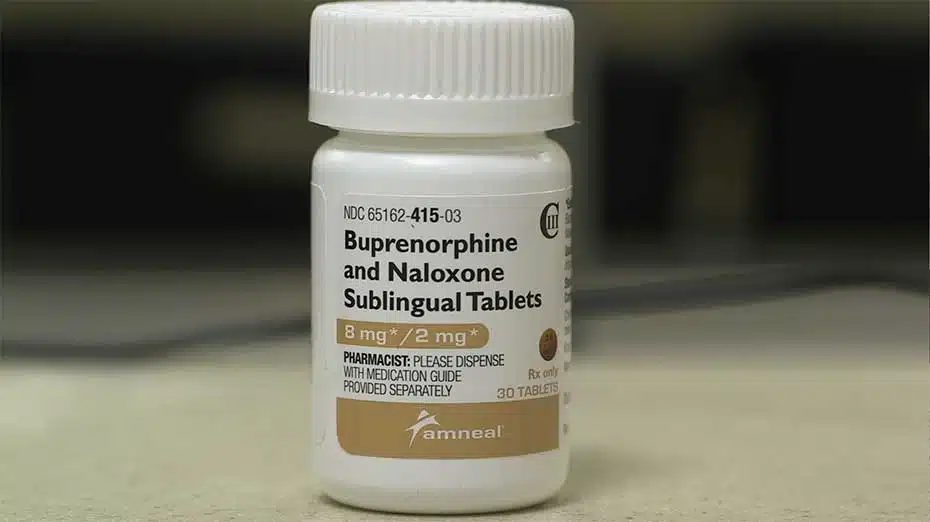What The Buprenorphine X-Waiver Removal Means For Clinicians & Patients

Buprenorphine is a life-saving medication that helps treat opioid use disorder (OUD). It decreases opioid cravings and withdrawal symptoms, making recovery much easier.
In the past, healthcare providers could not prescribe buprenorphine unless they received a special waiver known as the X-waiver. The U.S. government recently removed this requirement, a significant step toward ending the opioid epidemic.
History Of The X-Waiver
When the opioid epidemic began in the 1990s, clinicians could only prescribe buprenorphine to treat OUD in federally registered OUD treatment centers. They were not allowed to prescribe it in outpatient clinics or other treatment settings.
That changed when Congress passed the 2000 Drug Addiction Treatment Act (DATA 2000).
This Act allowed clinicians to prescribe buprenorphine and other OUD medications in various treatment settings, including outpatient clinics. However, to do so, they had to obtain a special waiver called the X-waiver.
Time-Consuming X-Waiver Requirements
To obtain an X-waiver, clinicians were required to complete specialized training.
They also had to submit a letter of intent to both the Drug Enforcement Administration (DEA) and the Substance Abuse and Mental Health Services Administration (SAMHSA). Once a clinician obtained the waiver, an “X” would appear on their DEA registration number.
The X-waiver requirement prevented numerous clinicians from prescribing buprenorphine. Many found the process of applying for a waiver too time-consuming.
Physicians had to undergo eight hours of training, while advanced practitioners (such as physician assistants and nurse practitioners) needed 24 hours. It’s not easy for frontline workers to take time off to complete this training.
Prescribing Barriers
In addition, even those who did obtain the waiver continued to experience barriers when prescribing buprenorphine.
For example, they could only prescribe the drug to a limited number of patients at one time. They were also subject to DEA audits intended to ensure they stayed within the patient limit.
Due to these barriers, only a small percentage of healthcare providers obtained X-waivers. As a result, millions of people missed out on an important part of OUD treatment.
OUD Gets Worse
In 2019, between 6 million and 7 million adults in the U.S. experienced OUD, but only about 25% received treatment. When left untreated, OUD often leads to a life-threatening overdose.
Easing Restrictions
In 2021, the Biden administration tried to expand access to buprenorphine and reduce overdose deaths by easing some of the restrictions surrounding the X-waiver.
In particular, it eliminated training requirements for clinicians wanting to prescribe buprenorphine to 30 or fewer patients. While this was a step in the right direction, countless patients still struggled to access the drug.
What The X-Waiver Removal Means For Clinicians & Patients
On December 29th, 2022, President Biden signed the Consolidated Appropriations Act of 2023 (also called the Omnibus bill). This law includes a provision called the Mainstreaming Addiction Treatment Act (MAT Act).
As per the MAT Act, any clinician with a standard DEA registration number may now prescribe buprenorphine even if they have not obtained an X-waiver, as long as state law allows it. The Act also eliminates any limits on the number of patients a clinician may treat with buprenorphine.
Better Access To Buprenorphine
These changes will significantly expand access to buprenorphine, especially in rural communities and communities of color.
Studies show these areas have the lowest numbers of X-waivered clinicians, meaning residents have historically had little to no access to buprenorphine.
According to SAMHSA, buprenorphine and other OUD medications have a number of important benefits for people with OUD, including:
- increased engagement in treatment
- decreased criminal activity
- increased ability to gain and maintain employment
- improved birth outcomes among pregnant people with OUD and other substance use disorders
The drug also helps prevent opioid overdose deaths.
Overdose Death Prevention
When France eliminated buprenorphine prescribing regulations in the 1990s, opioid overdose deaths fell 79% over a three-year period.
Addiction researchers believe the removal of the X-waiver will have a similar effect in the U.S. Many predict it will prevent at least 30,000 opioid overdose deaths per year.
Reduced Stigma
The removal will also likely reduce stigma surrounding medications for OUD. Stigma refers to judgment and discrimination based on a personal characteristic, including OUD and other substance use disorders.
Restrictions like the X-waiver contribute to the stigmatizing view that patients with OUD don’t deserve full access to medications like people with other diseases do. When stigma decreases, people become much more likely to seek addiction treatment.
If you or someone you love struggles with opioids, please reach out to Spring Hill Recovery Center. Nestled in the serene woodlands, our addiction treatment programs offer personalized, evidence-based care to help you or your loved one thrive.
- Current Psychiatry Reports — Why buprenorphine is so successful in treating opiate addiction in France https://link.springer.com/article/10.1007/s11920-007-0046-2
- Drug and Alcohol Dependence Reports — What is the prevalence of and trend in opioid use disorder in the United States from 2010 to 2019? Using multiplier approaches to estimate prevalence for an unknown population size https://www.sciencedirect.com/science/article/pii/S2772724622000300
- JAMA Network — Use of Medication for Opioid Use Disorder Among US Adolescents and Adults With Need for Opioid Treatment, 2019 https://jamanetwork.com/journals/jamanetworkopen/fullarticle/2790432
- Substance Abuse and Mental Health Services Administration — Medications for Substance Use Disorders https://www.samhsa.gov/medications-substance-use-disorders
- Substance Abuse and Mental Health Services Administration — SAMHSA Applauds Expansion of Access to Medication for Opioid Use Disorder (MOUD) https://www.samhsa.gov/newsroom/statements/2023/samhsa-applauds-expansion-access-moud


